In the mountainous regions of Northwest Vietnam, the ban flower, often called a "heaven-sent specialty," is not only a symbol of natural beauty but also a key ingredient in various traditional dishes. Among them, the ban flower salad is the most popular and beloved.
For the Thai ethnic group in the Northwest, ban flowers are not only used for decorating homes and landscapes but also serve as the main ingredient in many culinary creations such as stir-fried ban flowers, ban flower soup, and steamed sticky rice with ban flowers.
Of all these dishes, ban flower salad is particularly favored for its refreshing and unique flavor.
According to Ha Phuong, a resident of Chieng Coi Ward, Son La City, there are two types of ban flowers - purple and white. Both are edible, but purple ban flowers are generally preferred.
The ban flower season usually falls between the second and fourth lunar months. This is also the prime season for harvesting forest bamboo shoots, leading to the frequent pairing of the two ingredients in dishes like the traditional salad.
Ha Phuong explained that the authentic ban flower salad consists of ban flowers, bitter bamboo shoots, fermented leaf vegetables, roasted peanuts, and grilled stream fish. Essential seasonings include garlic, chili, mac khen (a local pepper), and aromatic herbs such as "duck mint," red basil, and "sang" vegetables.
Depending on available resources, households may adjust the ingredients based on personal taste.
The preparation involves removing the old stems from the ban flowers, keeping only the petals and stamens, then blanching them briefly in boiling water and allowing them to drain. Bitter bamboo shoots are finely sliced, soaked in diluted saltwater, lightly boiled, and drained. Grilled stream fish is deboned and pounded into flakes.
Before mixing, the blanched ban flowers are lightly crushed by hand. Bamboo shoots and finely chopped herbs are then added, along with seasonings such as salt, chili, garlic, sugar, mac khen, minced galangal, and lemon juice. The mixture is tossed thoroughly, left to marinate for 10 to 15 minutes, then combined with the pounded fish.
When served, the salad is topped with roasted peanuts for added aroma and visual appeal.
Ha Phuong noted that while simple in preparation, the dish offers a complex, delightful flavor. Ban flowers bring a natural sweetness with a slight astringency, while carefully processed bamboo shoots retain a crisp, fresh texture and a subtle bitterness.
Thanh Nga, a Hanoi resident who once traveled to the Northwest to taste the salad, described it as a "perfect harmony" of sour, spicy, salty, bitter, sweet, and nutty flavors that excite the palate.
"Ban flower salad is a unique seasonal dish, full of the flavors of the mountains and forests. It’s perfect for balancing rich or greasy meals," she said.
Passionate about the dish, Thanh Nga's family traveled over 280 kilometers to Son La this year to attend the Ban Flower Festival and enjoy authentic dishes made from this famous flower.
She also shared that she brings ban flowers back to Hanoi, where she washes, steams, and either freezes or dries them to use year-round. She has learned to cook several dishes with ban flowers, such as stir-frying them with beef or pork, stuffing them into fish for grilling or steaming.
Each preparation method brings out a different but equally delicious taste, making the dishes enjoyable for both adults and children.
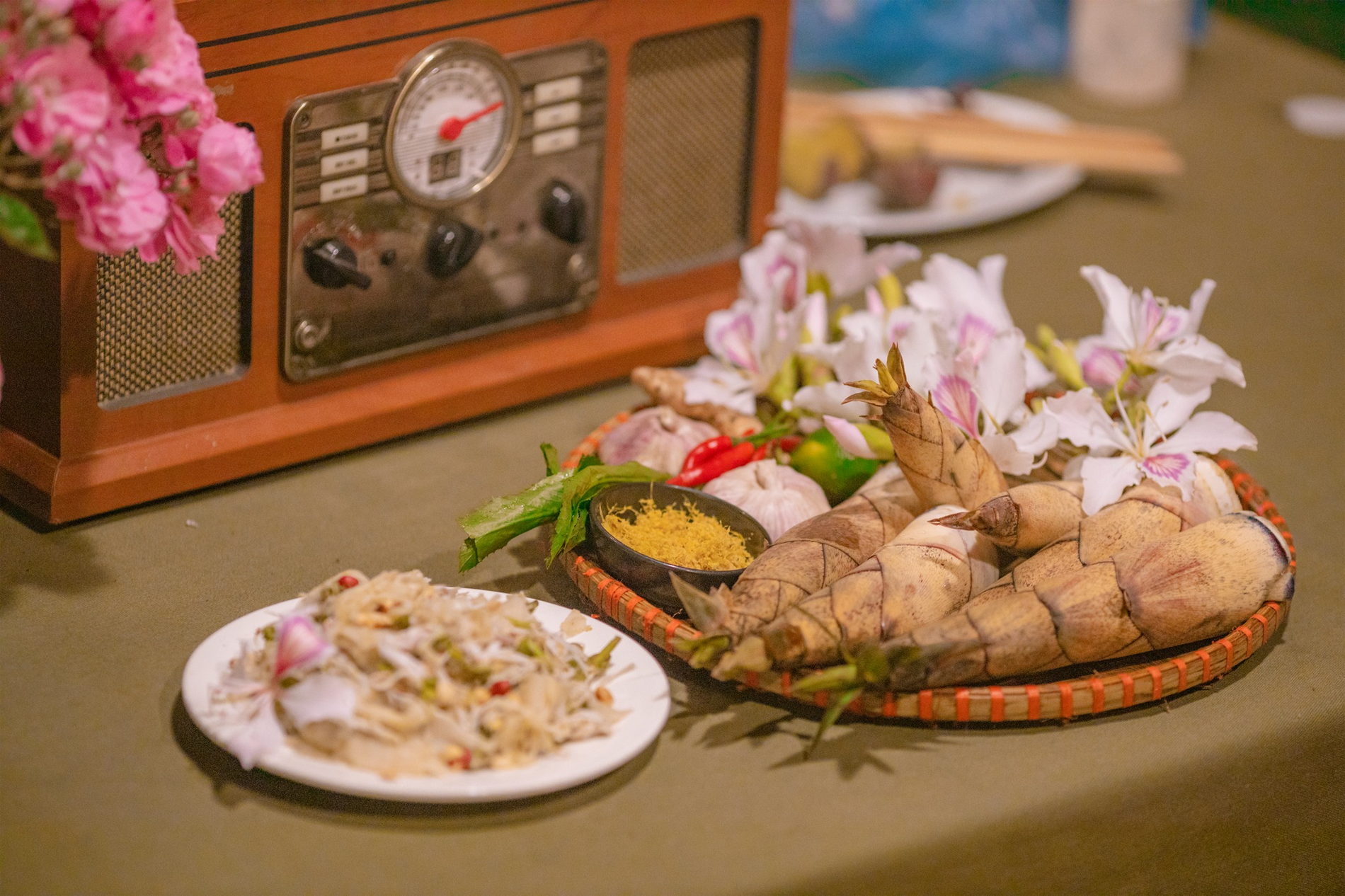
 |
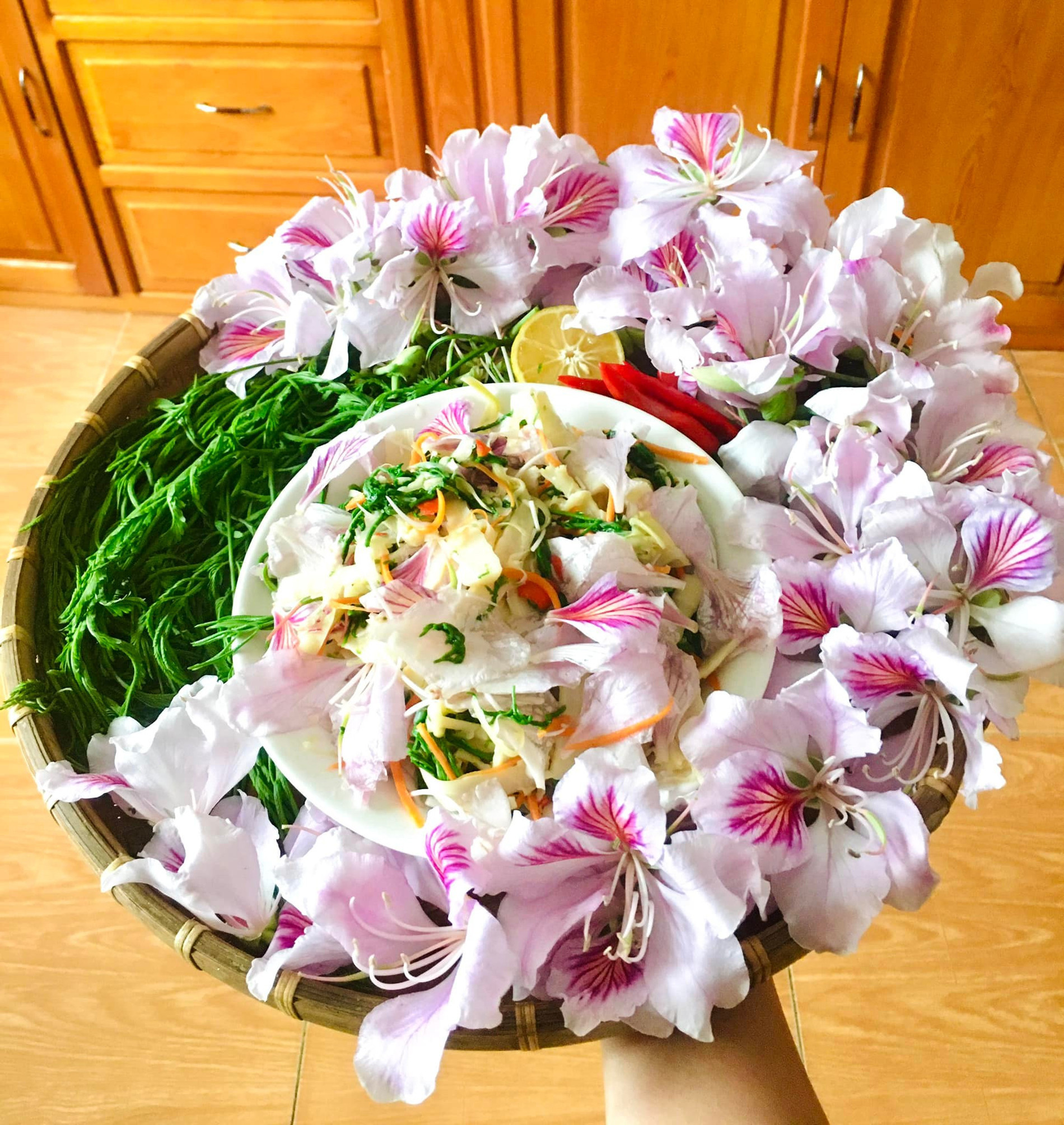 |
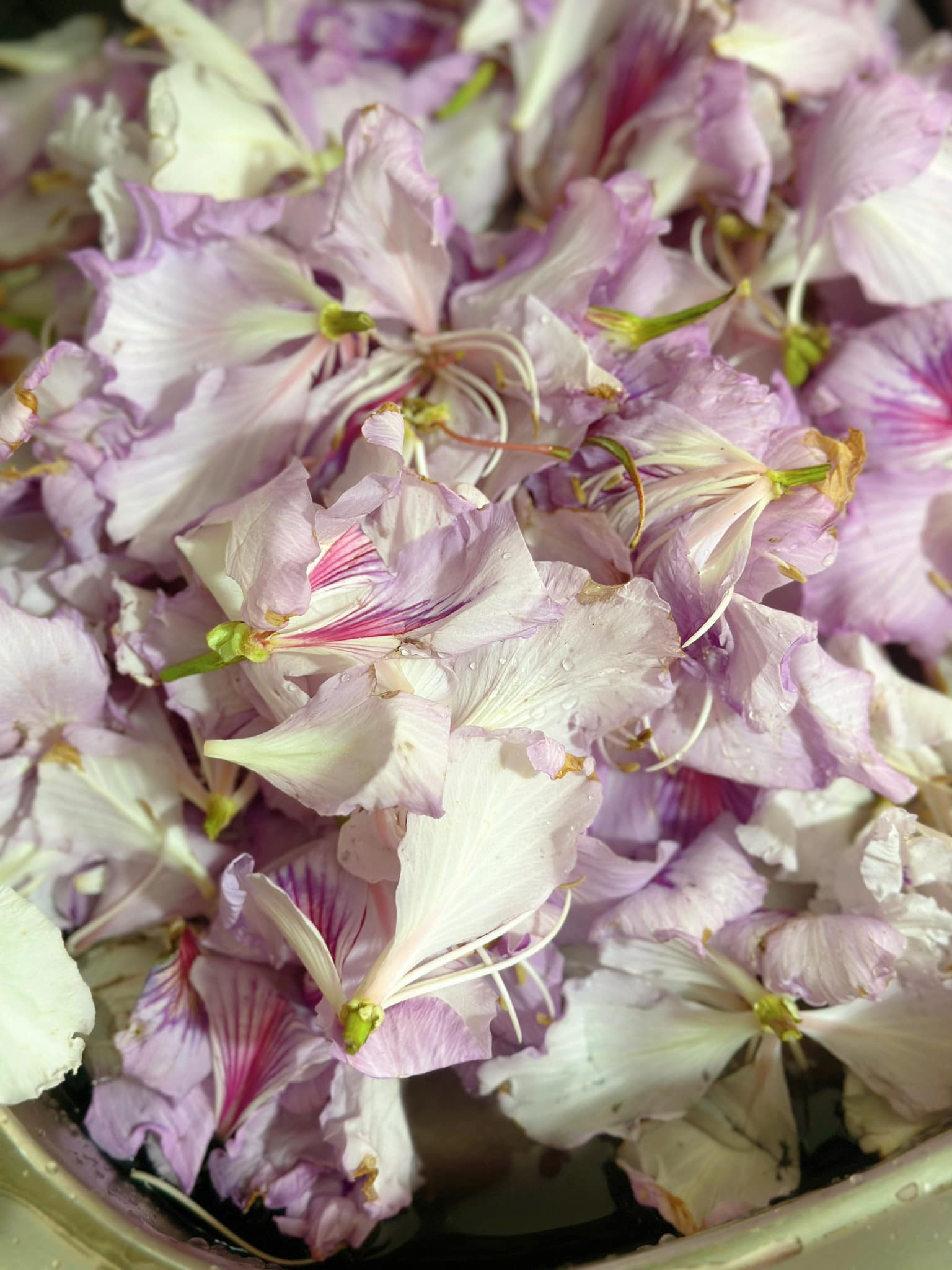 |
 |
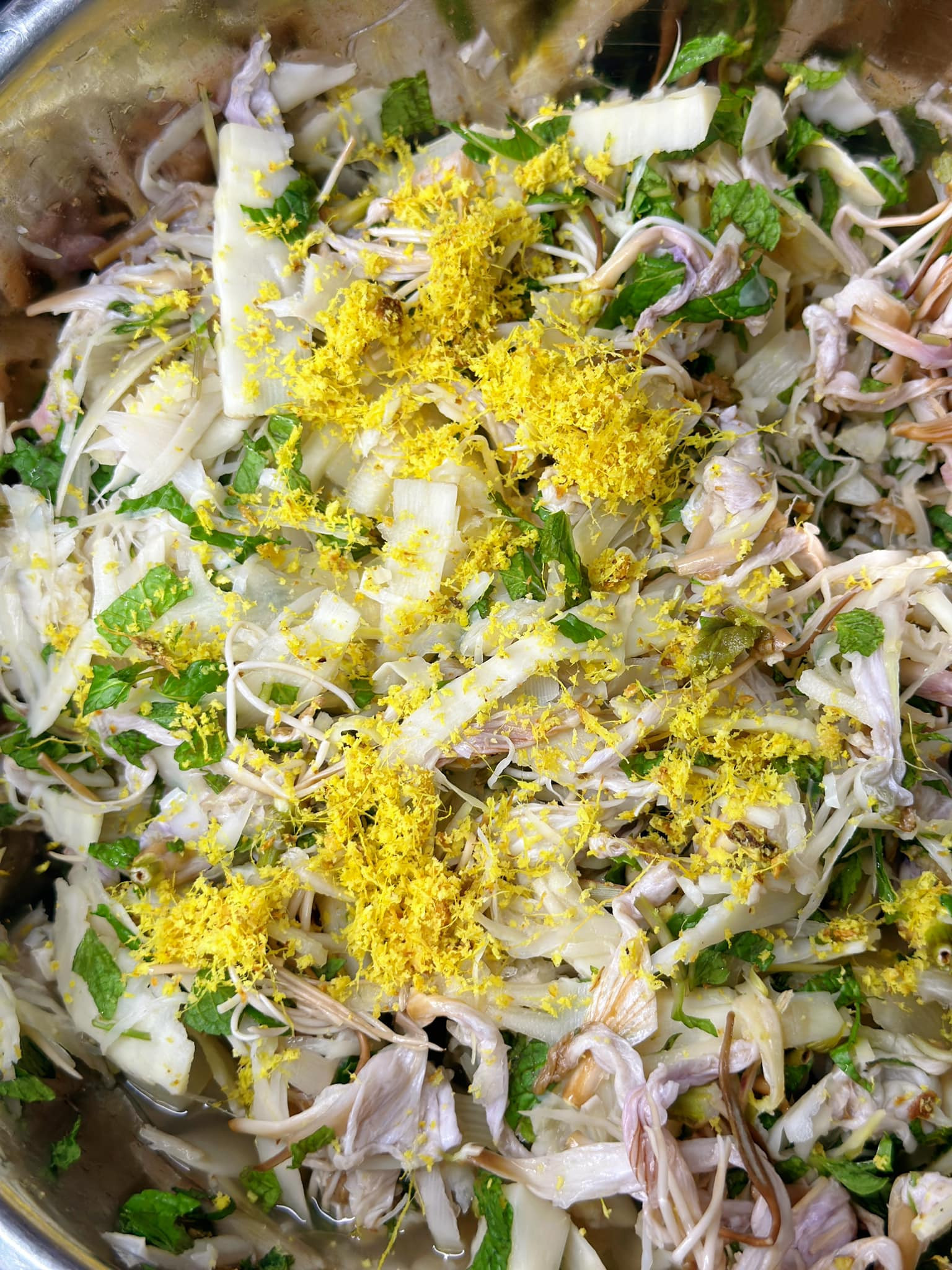 |
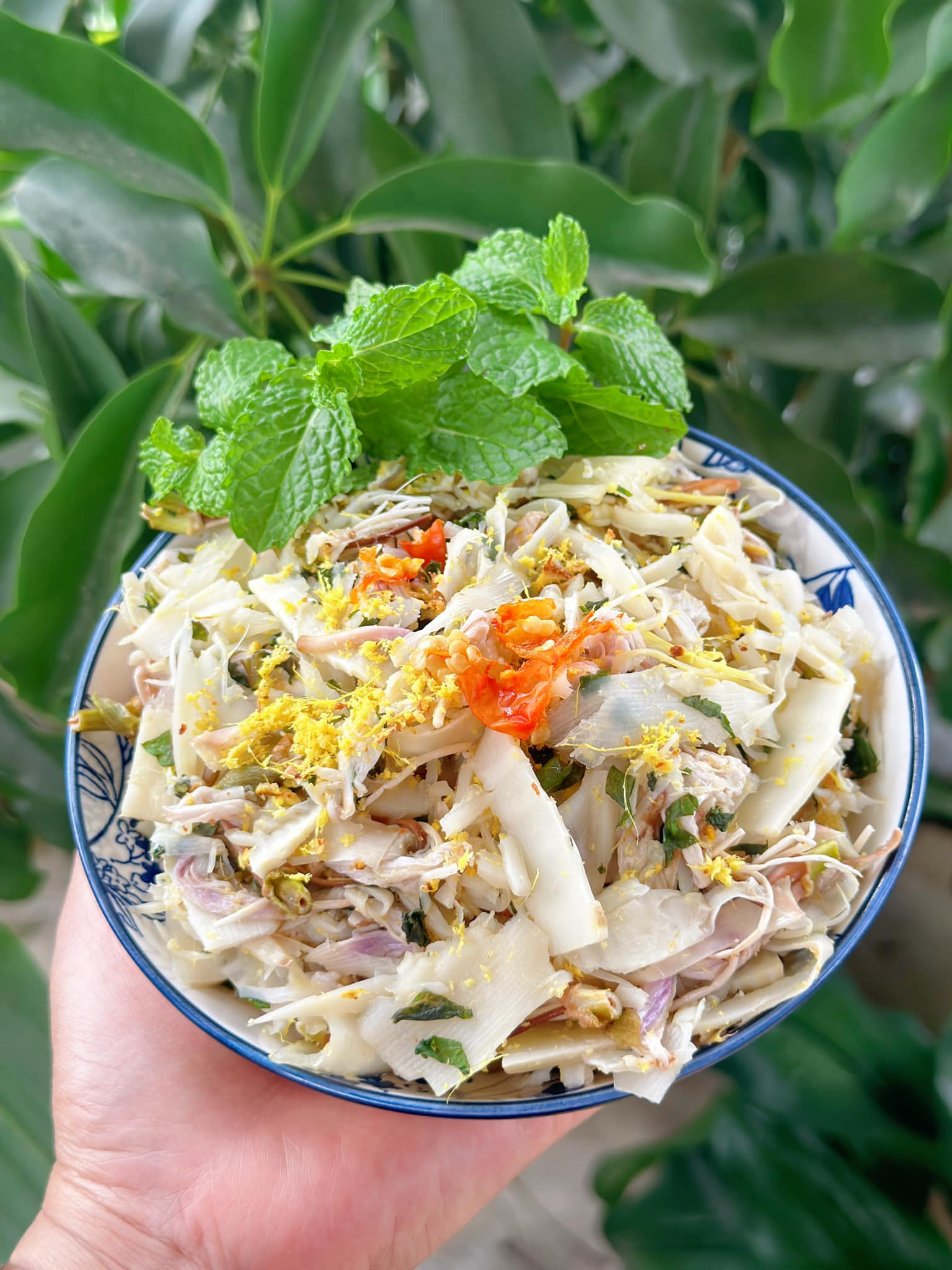
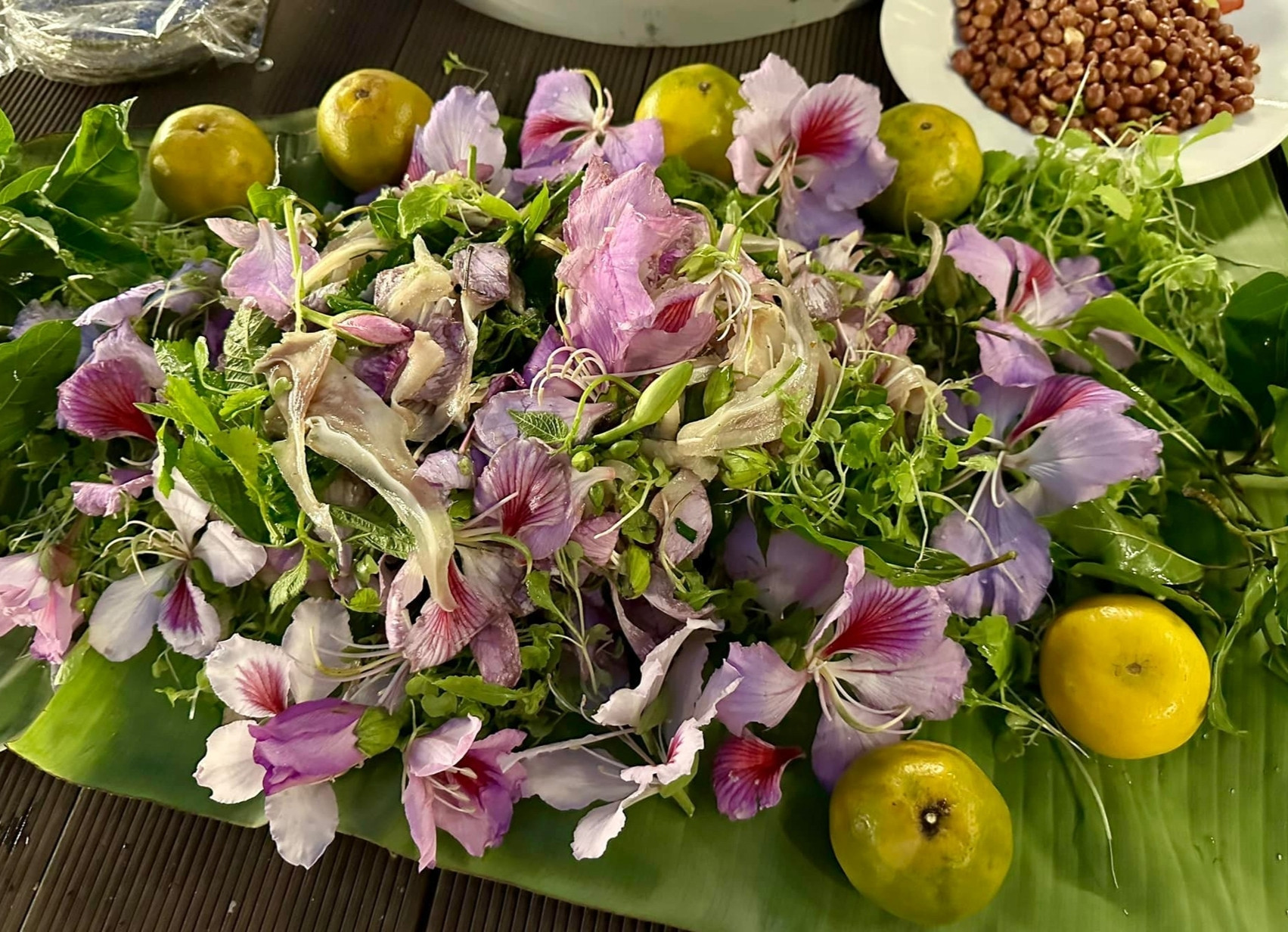 |
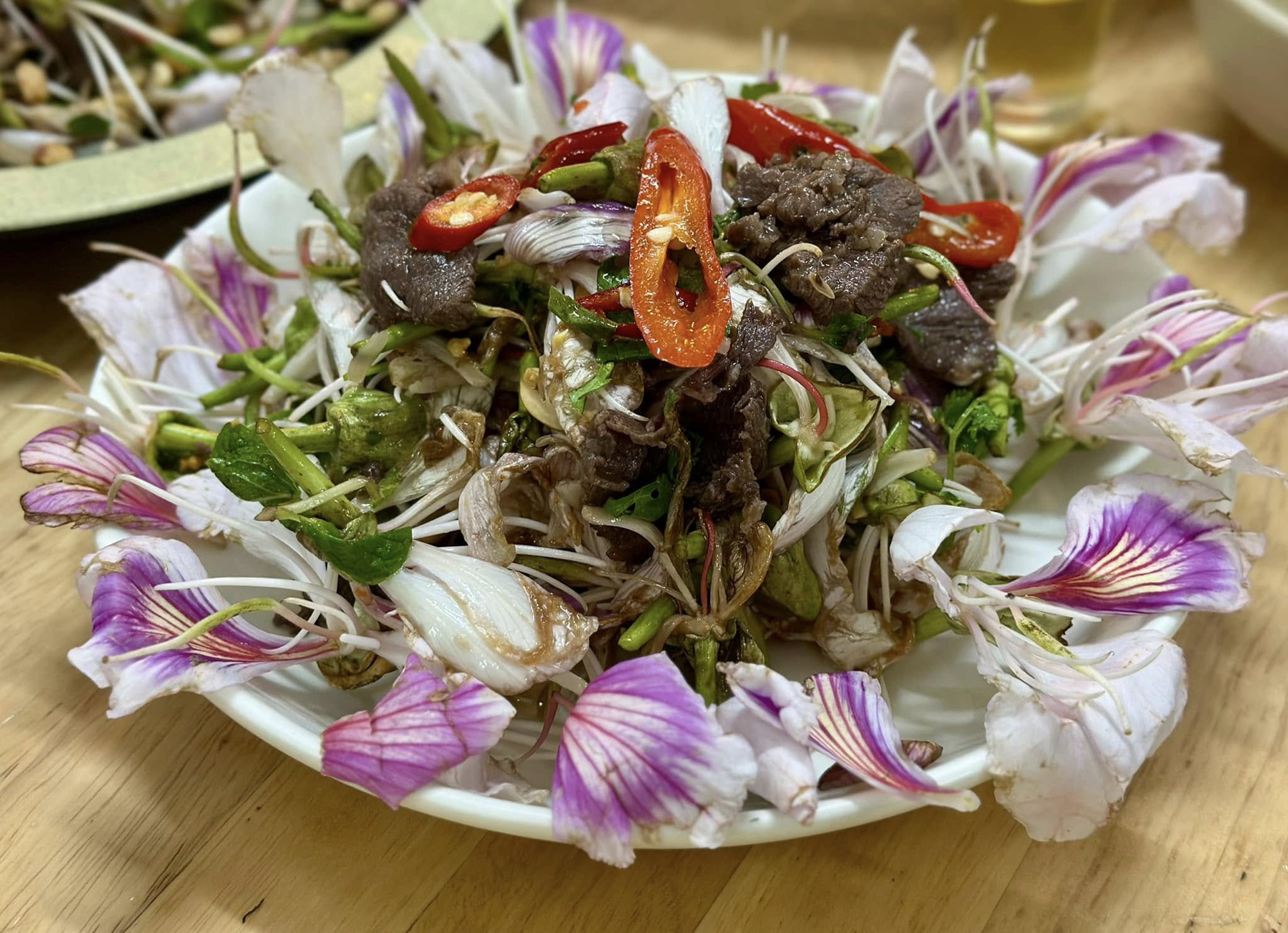 |